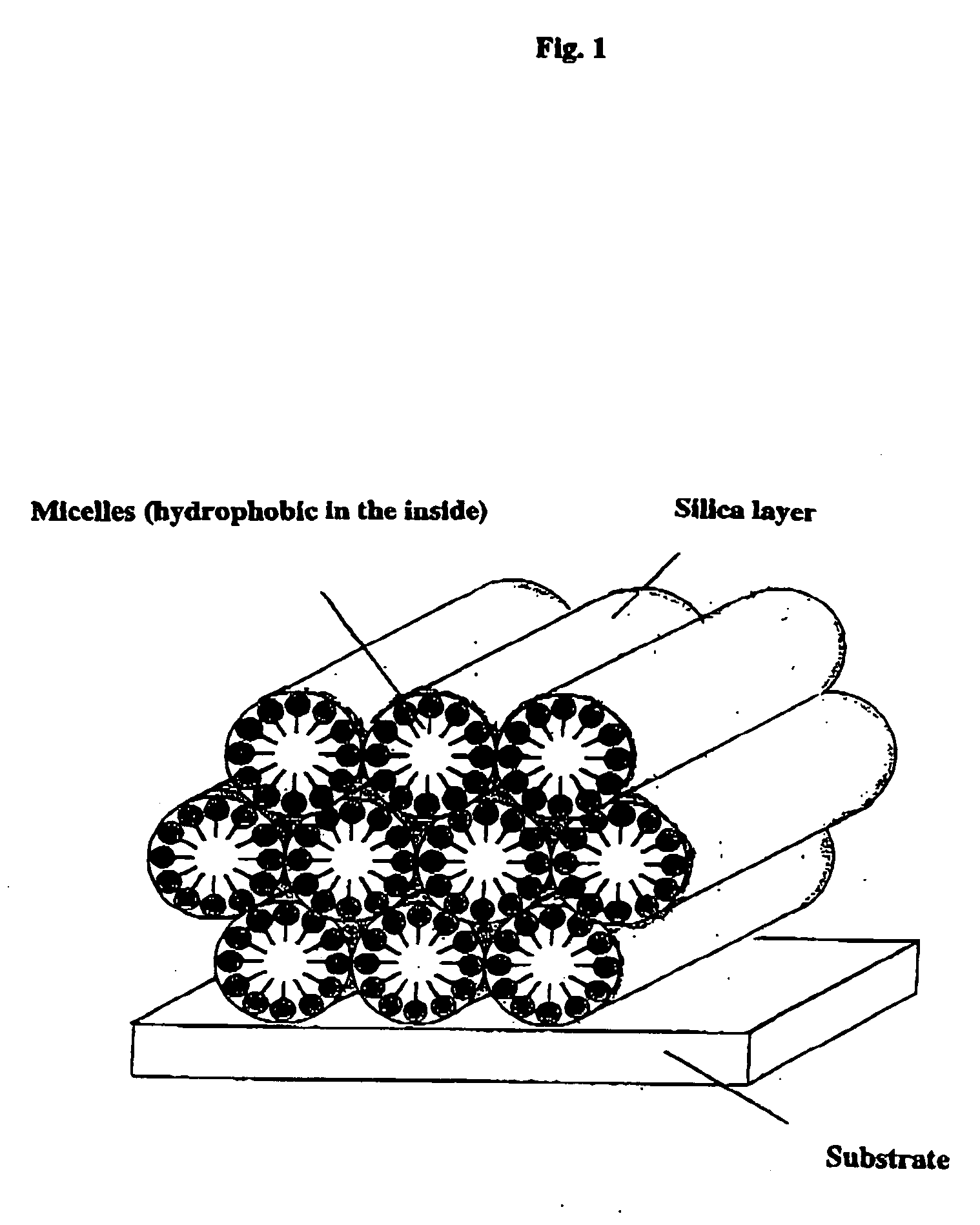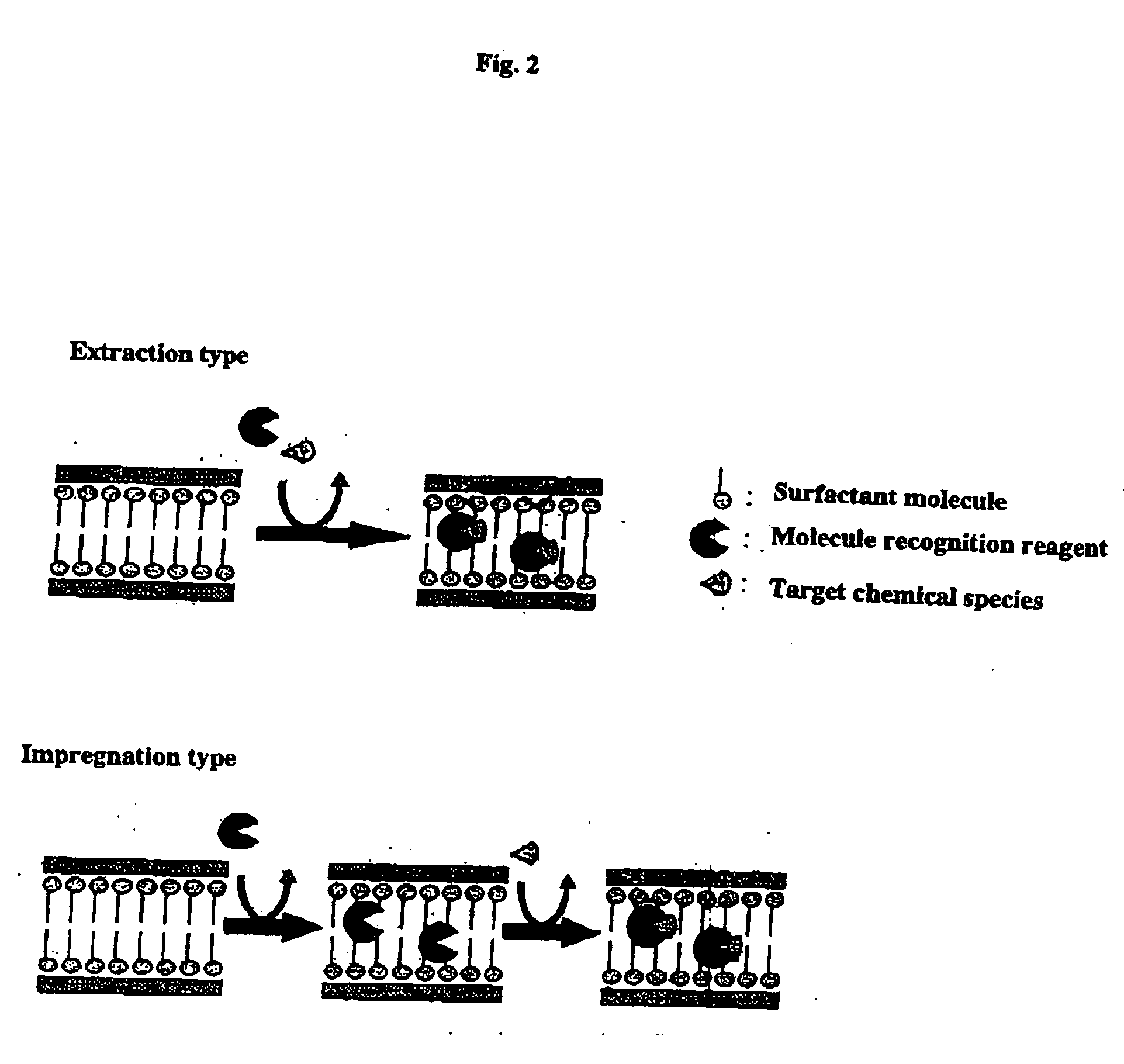Crystal oscillator nanochannel sensor
- Summary
- Abstract
- Description
- Claims
- Application Information
AI Technical Summary
Benefits of technology
Problems solved by technology
Method used
Image
Examples
examples
1. Method of Producing a Thin Film
[0049] First, a nanochannel body thin film was formed on the surface of a gold electrode above a crystal oscillator according to the following procedures.
Example of Preparation of a Thin Film-Forming Solution
The thin film solution was made to have the following composition (molar ratio).
TEOS:EtOH:H2O:HCl:CTAB:MPS=1:17.54:5.04:0.004:0.075:0.1
MPS: 3-Mercaptopropyltrimethoxysilane
CTAB: Cetyltrimethylammonium bromide
TEOS: Tetraethyl orthosilicate
[0050] In this composition, MPS is added thereby to improve the adhesion of the thin film to the gold electrode on the crystal oscillator. A thiol group in MPS is considered to be bonded with the surface of gold chemically.
[0051] The procedures are as follows.
(1) EtOH 9.7 mL, TEOS 12.3 mL and 2.78×10−3 M HCl 1 mL were mixed and the mixture was refluxed at 60° C. for 90 minutes.
(2) EtOH 18.4 mL, CTAB 1.519 g and 5.48×10−2 M HCl 14 mL were added to the solution after the solution was refluxed, f...
PUM
 Login to view more
Login to view more Abstract
Description
Claims
Application Information
 Login to view more
Login to view more - R&D Engineer
- R&D Manager
- IP Professional
- Industry Leading Data Capabilities
- Powerful AI technology
- Patent DNA Extraction
Browse by: Latest US Patents, China's latest patents, Technical Efficacy Thesaurus, Application Domain, Technology Topic.
© 2024 PatSnap. All rights reserved.Legal|Privacy policy|Modern Slavery Act Transparency Statement|Sitemap



